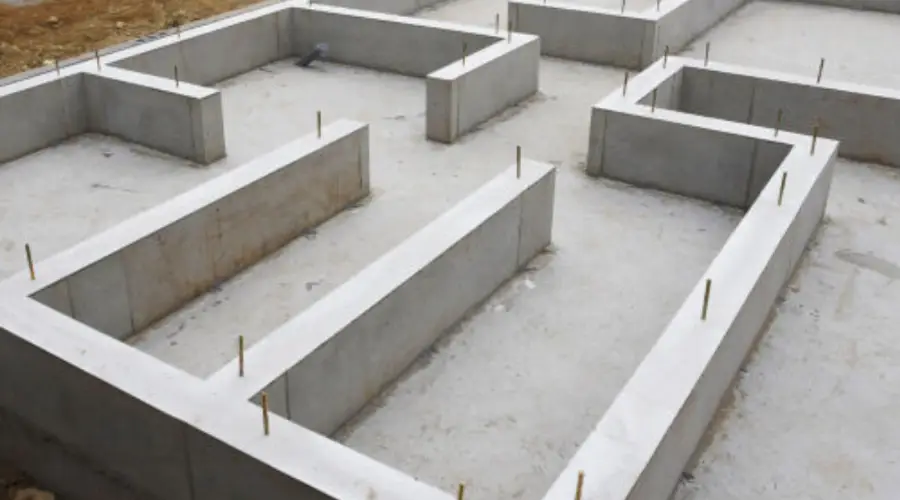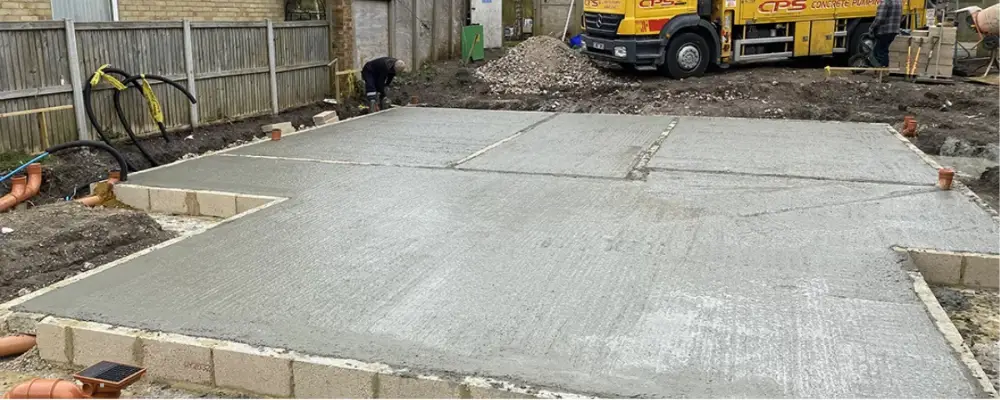Having a solid foundation is essential for any construction, as it keeps the structure lasting. Concrete bases are widely used for the construction of bases for all kinds of buildings and are highly efficient. This blog will explore the importance, applications, and laying procedures of concrete bases and how they contribute to the longevity of concrete structures.
What is a Concrete Base?
A concrete base is a solid, level layer of concrete that acts as a support or foundation for numerous construction, machinery, and other structural elements. This base slab is highly strong, stable, and resistant and is most commonly applicable in residential and industrial construction.
Application of Concrete Base

- It is most commonly used as a foundation in residential and commercial buildings.
- Patios, walkways, driveways, and sidewalks are laid using the concrete base.
- Outdoor structures such as sheds, garages, and storage units use concrete slab foundations.
- It is ideal for greenhouse construction to prevent the building from shifting due to heavy winds.
- Industrial structures and places using heavy machinery and equipment have concrete bases.
- The base material is used to anchor retaining walls to prevent soil erosion.
- Basketball and tennis courts are constructed using concrete bases.
- It is used as the base for holding outdoor generators.
Preparing the Area for a Concrete Base
Marking and Measuring
Measure the place where the concrete base needs to be laid and mark the length, breadth, and depth. Ensure that the ground surface is dense, level, and free of rocks, grass, or debris.
Dig Marked Area
Excavate the soil up to the measured depth using a shovel or a mechanical excavator. Generally, the concrete slab is recommended to be 150 to 225 mm deep. Ensure that the surface is on the same level throughout the excavated area. Compact the excavated area with a compactor to make the surface dense and stable.
How to Lay a Concrete Base
Lay the Sub-base
Place a layer of crushed stones or gravel 50 mm thick throughout the excavated area and compact it using the compactor to create the sub-base layer.
Build Framework
Build a temporary framework across the excavated area using metal or wooden forms of the required length and width. Ensure that the framework is stable enough to hold the concrete poured into the structure.
Install Reinforcement (if necessary)
Steel rebars or steel meshes can be installed within the structure to provide additional strength to the concrete base. The rebars should be placed at an elevation to avoid direct contact with the base, and a minimum gap of two inches should be left from the formwork.
Pour Concrete
Mix the concrete using a mechanical mixer based on the appropriate mix ratio (standard ratio: 1:2:3). Pour the concrete mix into the framework onto the sub-base material from each corner and spread it evenly across the surface using the shovel. Use a vibrator to remove gaps in the concrete.
Finishing
To achieve a polished look, use a trowel or a float to provide a smooth surface to the concrete base. In some cases, textures are added by using a broom, a patterned float, or grooves on the wet concrete.
Curing
Keep the concrete base idle for one or two days to set, and it will get hard enough. Maintain the moisture on the surface for at least seven days by spraying water periodically or covering the surface with plastic. It will take approximately 28 days for the base concrete to achieve maximum strength.
Remove Formwork
After curing, remove the formwork carefully without affecting the slab’s structural integrity. After that, smooth the hard surface and edges with a trowel.
Essential Tools and Materials for Building a Concrete Base
Tools
- Shovel
- Concrete mixer
- Trowel or Float
- Level
- Measuring tape
- Rake
- Hammer
- Saw
- Rubber mallet
- Concrete vibrator
Materials
- Mixed Concrete
- Gravel or Crushed Stone
- Formwork
- Sealant
- Reinforcement steel rebar
Advantages of Concrete Bases
- The concrete base has a high load-bearing capacity and can support heavy loads from buildings, machinery, and other structures.
- It provides a stable foundation, thus preventing the risk of settlement.
- This slab is resistant to weather and temperature fluctuations and can be used in all types of weather conditions.
- It is highly durable and can last for a very long time.
- This slab has versatile applications and is suitable for residential, commercial, and industrial applications.
- Concrete bases are customisable and can be created for different shapes, sizes, and textures.
- It requires low maintenance in the long run, thus saving maintenance costs.
- It is highly resistant to fire and pests, thus increasing the lifespan of the structure.
Conclusion
Concrete bases are essential components of construction that provide durability and longevity to the structure. They provide additional support, uniform distribution of loads, improved drainage systems, and acting as a foundation. Due to its physical properties, it is used in a wide range of applications in almost all types of construction projects.
FAQs
The curing process of the concrete base typically takes around 28 days to fully cure and attain maximum strength and durability.
Cracks in the concrete base can be prevented by
1. Using the right concrete mix
2. Proper curing
3. Compaction before pouring
4. Adding reinforcement
5. Adding control joints
6. Sealing the voids and cracks
7. Maintaining a cool surface temperature
Yes, concrete bases can be used for all types of construction, as they provide good stability, durability, and a level base. These bases are widely used in the construction of residential, commercial, and industrial buildings.

